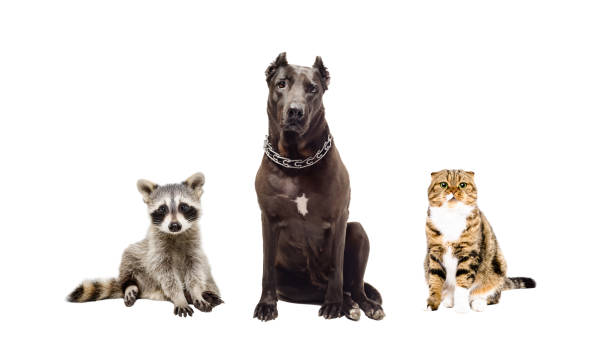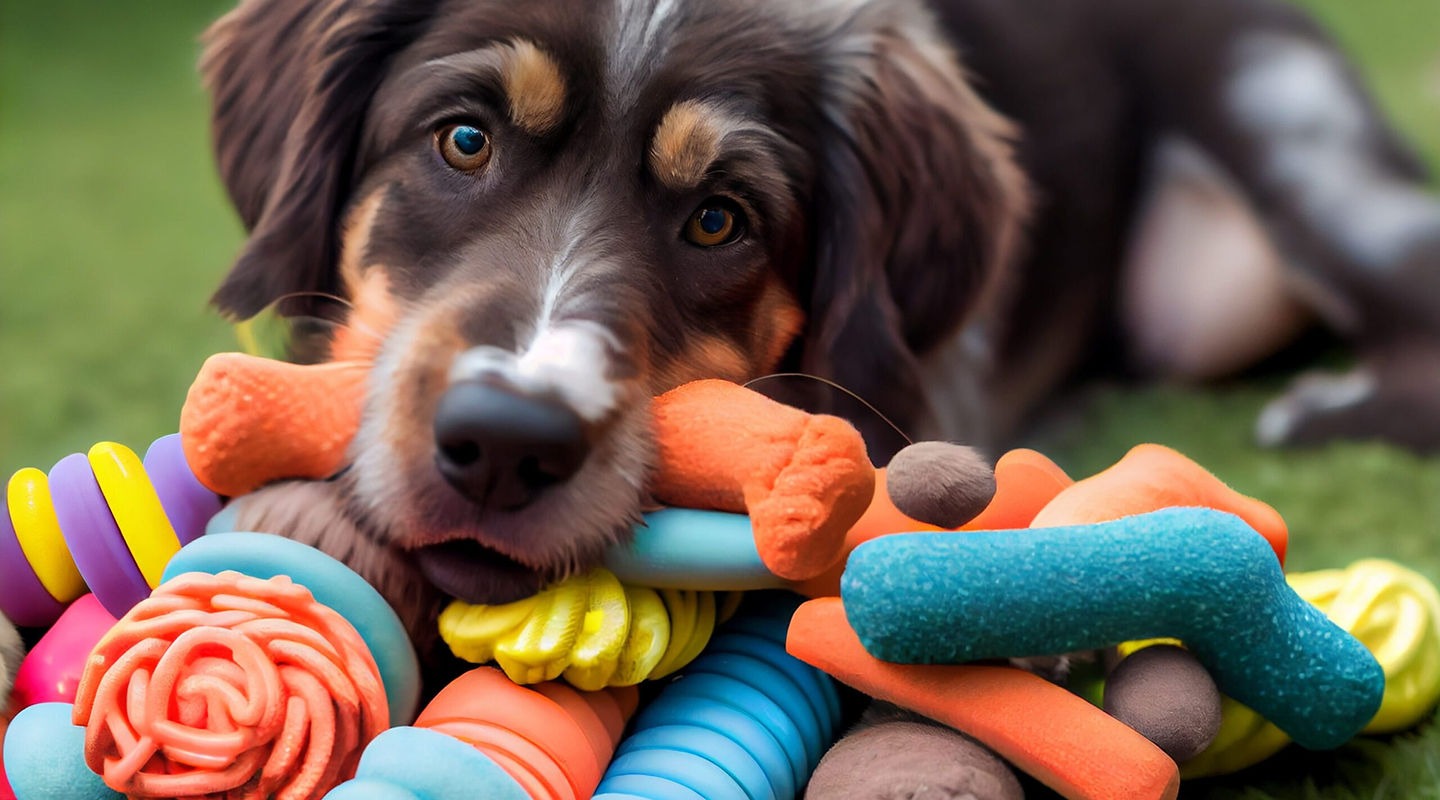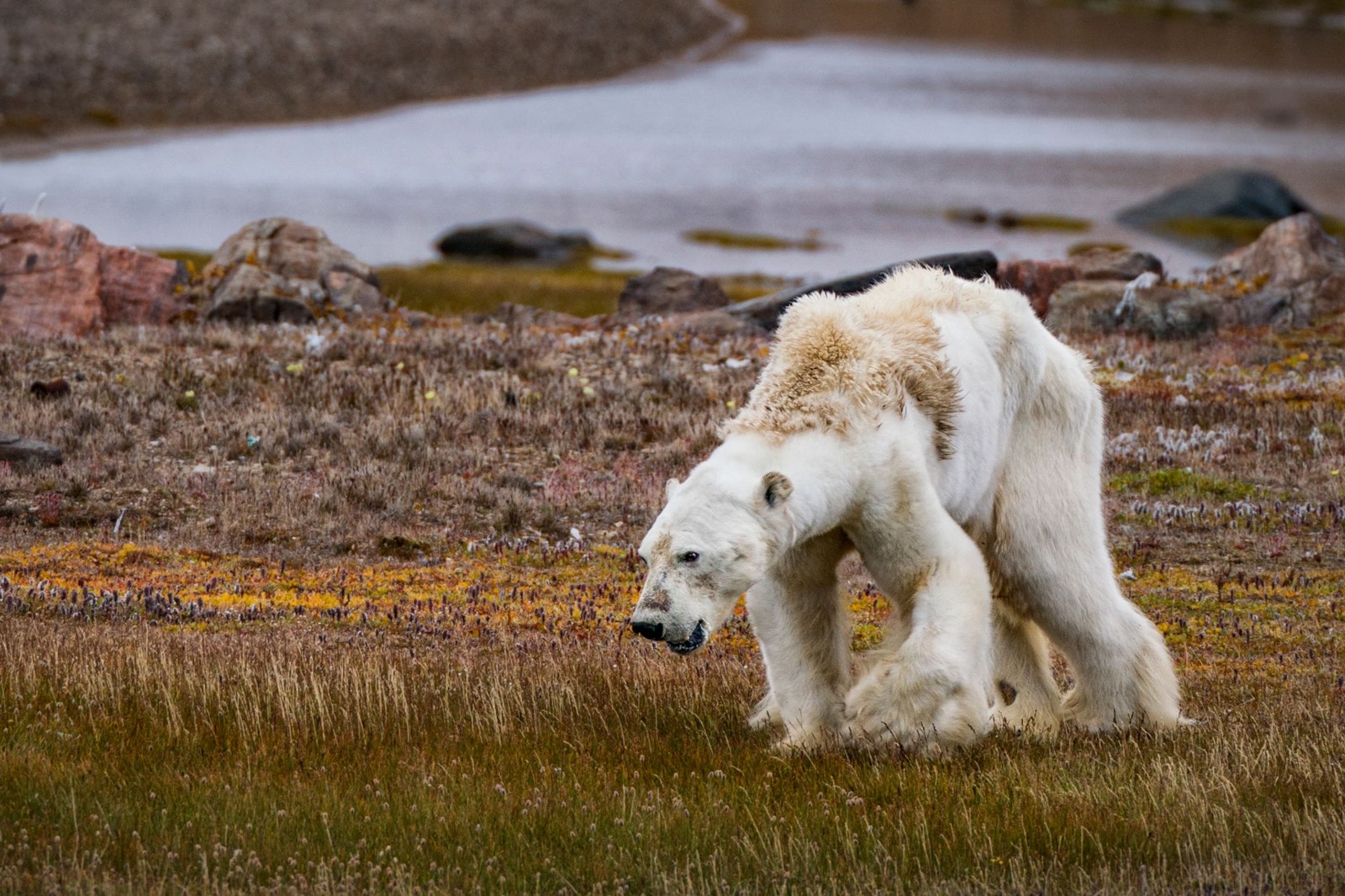
Hidden Gems of the Pet World: Rare Dog and Cat Breeds You’ve Probably Never Heard Of
Discover fascinating and unique dog and cat breeds that are rare, overlooked, or unfamiliar to most pet lovers. Learn about their origins, characteristics, and the special care they require.
🐶 Pet Star
53 min read · 10, Mar 2025

Introduction: The Allure of Rare Breeds
When it comes to choosing pets, many of us gravitate toward familiar breeds like Labradors, Siamese cats, or Persian cats. But what about the animals that are less well-known and hidden in the corners of the pet world? There are hundreds of rare dog and cat breeds that are not only unusual in appearance but also rich in history, personality, and unique care requirements.
In this article, we will take you on a journey through some of the rarest dog and cat breeds, from the agile and mysterious to the simply stunning. Whether you are an experienced pet owner, a prospective adopter, or simply an animal lover curious about the diversity of pets, you’ll find these breeds fascinating and, perhaps, even tempting to welcome into your home.
The world of rare dog and cat breeds is a treasure trove of wonder, and by learning about these lesser-known pets, you gain a deeper appreciation for the complexity and beauty of our furry friends. So, let’s dive into some extraordinary breeds you may have never heard of before!
Rare Dog Breeds
1. Azawakh: The Graceful African Greyhound
Originating from West Africa, the Azawakh is an ancient breed of sighthound that was originally used for hunting by nomadic tribes. This breed is distinguished by its slender, elegant build and incredibly fast running speed. The Azawakh was prized by the Tuareg people for its ability to hunt large game like antelope, and it remains a revered companion in its native lands.
Known for its loyal and protective nature, the Azawakh can be somewhat aloof with strangers, but it is affectionate and devoted to its family. Despite its elegance, this breed requires significant exercise due to its high energy levels. It’s also worth noting that their short coat makes them vulnerable to cold weather, and they need to be kept in a warm, comfortable environment.
This breed remains rare outside of its native region, though it is starting to gain recognition in Europe and the United States. Their majestic appearance and unique personality make the Azawakh a highly sought-after, albeit rare, companion for those looking for a sight hound with a difference.
2. Mudi: The Herding Dog from Hungary
The Mudi is a herding dog from Hungary that is not widely known outside its home country. With a coat that can range from curly to wavy, this medium-sized dog has an alert and agile nature, perfect for herding livestock across rugged terrains. The Mudi is often used on farms to manage sheep, cattle, and even pigs.
One of the Mudi’s most notable characteristics is its exceptional intelligence and trainability. This breed excels in obedience training, and its keen instincts make it a top performer in various dog sports, including agility and obedience competitions. The Mudi is also known for its strong bond with its owner, making it an excellent family companion as well as a hardworking working dog.
Although the Mudi is still rare outside of Hungary, its popularity is steadily increasing due to its impressive working ability and endearing personality. If you are an active person or have a farm or large property, the Mudi is a wonderful choice for a companion and working partner.
3. Klee Kai: The Miniature Husky
The Alaskan Klee Kai is a relatively recent breed that was developed in Alaska in the 1980s to resemble the Siberian Husky but in a smaller package. These dogs were bred to be companion-sized versions of the Husky, while retaining the breed's distinctive markings and wolf-like appearance. Despite their small stature, Klee Kais are highly energetic, intelligent, and full of personality.
Unlike larger huskies, Klee Kais do not have the same endurance for cold climates, so they are more suited for living indoors with access to moderate outdoor exercise. These dogs are known for their aloof nature—they tend to be reserved with strangers but form strong, loyal bonds with their families. Their high energy and need for stimulation make them well-suited for active individuals or families with the time to devote to their training and exercise.
Though they are not as common as other miniature breeds, the Alaskan Klee Kai has a growing fan base, thanks to its adorable appearance and high energy. Its rarity adds to its appeal, making it a special breed to consider for those looking for a miniature version of the Husky.
4. Löwchen: The Little Lion Dog
The Löwchen, also known as the "Little Lion Dog," is a small, rare dog breed that has existed for centuries. Historically, it was favored by royalty in Europe, especially in France, where it was often seen as a lap dog and companion for the aristocracy. With a distinctive lion-like mane around its head, the Löwchen is not only visually striking but also has a cheerful and affectionate disposition.
Known for its extroverted and playful personality, the Löwchen is a fantastic family companion that gets along well with children and other pets. Despite being small, this breed is known for its agility and is an excellent performer in dog sports, such as obedience and agility trials. Its coat requires regular grooming to maintain its characteristic appearance, but the Löwchen’s temperament makes it a pleasure to care for.
The Löwchen is incredibly rare, and its popularity has remained low, though it is starting to gain more recognition in the dog world. It remains one of the lesser-known but most delightful breeds, perfect for those seeking an affectionate companion with a regal air.
Rare Cat Breeds
5. Singapura: The Tiny, Playful Cat
The Singapura is a small and energetic breed that hails from Singapore. Often considered one of the smallest cat breeds, the Singapura is known for its large eyes, pointed ears, and sleek, short coat. Despite its diminutive size, this breed has an incredibly playful and curious personality. Singapura cats are known to form strong bonds with their owners and are highly social animals, thriving on attention and interaction.
Singapura cats are active and enjoy engaging in games and exploring their environment. They are particularly well-suited to apartments or smaller living spaces due to their size and social nature. While they are a rare breed, Singapura cats have been gaining popularity for their delightful personalities and charming, miniature appearance.
6. Kurilian Bobtail: The Russian Tailless Cat
Originating from the Kuril Islands, which are located between Russia and Japan, the Kurilian Bobtail is a unique breed with a naturally bobbed tail. This breed has been around for centuries and is known for its hunting skills and playful personality. Unlike many other cat breeds, the Kurilian Bobtail enjoys playing in the water, which is unusual for most felines.
The Kurilian Bobtail’s distinctive tail, which can vary in length and shape, gives it a striking appearance. These cats are highly intelligent and form strong bonds with their families. They are also known for their affectionate and interactive nature, making them wonderful companions for those who are looking for a cat that enjoys playtime and social engagement.
Despite being relatively unknown outside of Russia, the Kurilian Bobtail is slowly making its way into the hearts of cat lovers worldwide. Its natural beauty and playful disposition make it a truly special breed.
7. Sokoke: The African Wildcat Look-Alike
The Sokoke is a rare breed from Kenya that closely resembles the African wildcat, thanks to its distinctive spotted coat and sleek build. It is often considered one of the most exotic-looking domestic cat breeds. This breed is active and highly intelligent, often described as both curious and adventurous. They are known for their ability to learn quickly and enjoy engaging in various activities, from climbing trees to exploring their surroundings.
Sokoke cats are typically friendly and affectionate, but they are also independent and like to have their own space at times. While they may be rare outside of Africa, Sokokes are gaining attention for their unique appearance and dynamic personality. If you're looking for a cat with a wild side, the Sokoke is a fascinating option.
8. Peterbald: The Hairless Cat with a Sleek Body
The Peterbald is a relatively new breed from Russia that is often compared to the Sphynx due to its hairless appearance. However, the Peterbald is distinguished by its graceful body shape and longer, leaner build. These cats are known for their affectionate and social nature. While some Peterbalds have a completely hairless coat, others may have a fine, peach-fuzz-like covering, giving them a soft, velvety feel.
Peterbalds are highly interactive and enjoy being involved in their owner's activities. Their affectionate demeanor makes them great companions, but they do require a bit of extra care, especially in terms of skincare due to their lack of fur. Peterbald cats are still relatively rare but are steadily becoming more popular due to their unique appearance and loving personalities.
9. Devon Rex: The Mischievous Curly Cat
The Devon Rex is a distinctive and rare cat breed known for its curly coat and large, expressive eyes. This breed originated in the 1960s in Devon, England, where it was the result of a spontaneous mutation in a litter of kittens. What sets the Devon Rex apart from other cats is its unique coat texture, which is soft, wavy, and almost suede-like to the touch. Its large ears, big eyes, and elf-like face further contribute to its quirky and charming appearance.
Devon Rex cats are often described as affectionate, playful, and high-energy. They are highly social creatures that love to be involved in all aspects of family life. Despite their small size, they are incredibly agile and love climbing, jumping, and playing. Their playful nature often leads them to engage in activities that would be unusual for other breeds, such as fetching and interactive games.
Their low-maintenance coat, in comparison to other breeds, is a major advantage for pet owners. However, they still require regular grooming to maintain their distinctive curl. As a breed that enjoys human company, the Devon Rex is best suited for households where they can get plenty of attention and affection.
The Devon Rex is rare outside of the UK, though it is gaining popularity in other parts of the world. Its distinct personality and looks make it a beloved choice for people seeking a cat with a fun-loving attitude and an eye-catching appearance.
10. Manx: The Tailless Wonder of the Isle of Man
The Manx is one of the most intriguing cat breeds, known for its shortened or absent tail. This breed originates from the Isle of Man, where it is famous for its naturally occurring genetic mutation that results in the taillessness or very short tails of its cats. There are various tail lengths in the breed, ranging from a completely tailless “rumpy” to those with short, bobbed tails.
Beyond its unique tail, the Manx is also recognized for its round face, muscular body, and long hind legs. The breed is robust, playful, and often compared to dogs due to its high level of trainability and loyalty. Manx cats are known to be affectionate and loyal companions who bond strongly with their families. They enjoy playing fetch and are generally very social with children and other pets.
Because of its isolated origin, the Manx remains a rare breed, particularly outside the Isle of Man, where it has deep cultural ties. It has a special place in the hearts of cat enthusiasts and is admired for its striking physical features and endearing personality. Despite their taillessness, the Manx is an incredibly healthy breed, but due to its genetic mutation, potential buyers should ensure that they purchase from reputable breeders who screen for the breed's genetic conditions.
The Rarity of These Breeds and Why They Matter
Rare dog and cat breeds, like the ones we've explored, often fly under the radar due to their limited geographical spread or historical origins. Many of these breeds have faced challenges in terms of preservation, either due to their remote locations, historical agricultural practices, or simply because of their uniqueness, which doesn't always fit mainstream preferences.
However, these rare breeds are incredibly valuable not only for their distinctive looks but also for their rich histories. Many have evolved alongside specific regions, fulfilling roles like working dogs, hunters, or farm companions. In this way, they help tell the story of human-animal relationships over centuries.
Moreover, rare breeds often have unique genetic traits that contribute to the overall genetic diversity of their species, making them important for long-term breed preservation. While some rare breeds are at risk of becoming extinct due to low numbers or lack of breeding programs, responsible breeding initiatives and growing awareness are helping to maintain these treasures.
Whether it’s a working dog like the Mudi, a sighthound like the Azawakh, or a cat with a distinct tail like the Manx, each of these breeds is an example of the beautiful variety that exists in the animal kingdom. They provide opportunities for individuals to discover a companion that fits their lifestyle, preferences, and interests while helping preserve the diversity of the world’s animals.
Caring for Rare Breeds: What You Need to Know
Owning a rare dog or cat breed is an exciting and rewarding experience, but it also comes with specific responsibilities. These breeds often have unique needs and temperaments that differ from more common pets. Understanding these requirements is crucial to providing the best care for these remarkable animals.
1. Health Considerations: Many rare breeds are genetically unique, which means they may be prone to specific health conditions. For example, the Manx may experience spinal issues due to its taillessness, while the Azawakh can be susceptible to certain autoimmune diseases. It’s important to work closely with a veterinarian who understands the breed's specific health concerns and can provide early intervention when necessary.
2. Grooming: Some rare breeds, such as the Devon Rex or Peterbald, have minimal grooming needs due to their coat type. However, others, like the Löwchen or Azawakh, require more intensive grooming and regular maintenance to ensure they stay healthy and comfortable.
3. Exercise and Mental Stimulation: Active breeds like the Mudi or Azawakh require a lot of exercise to stay physically fit and mentally stimulated. Regular walks, runs, or games are essential for keeping these breeds happy and healthy. Mental stimulation is also key to preventing boredom, which can lead to destructive behavior.
4. Social Needs: Rare breeds often have specific social needs that should be met to ensure they thrive. Breeds like the Devon Rex and Sokoke are particularly affectionate and require a lot of attention and companionship. On the other hand, more independent breeds like the Azawakh may prefer a more hands-off approach but still need bonding time with their owners.
5. Ethical Breeding and Adoption: As rare breeds become more desirable, unethical breeding practices can emerge. It is crucial to adopt from reputable breeders who are committed to the health and well-being of the animals, or consider adopting from rescue organizations dedicated to preserving rare breeds.
Conclusion
The world of rare dog and cat breeds offers an exciting and fascinating glimpse into the rich history and diversity of the animal kingdom. From the graceful Azawakh to the playful Manx, these breeds are not just unusual in appearance, but also possess unique temperaments, abilities, and characteristics that make them wonderful companions for the right people. The rarity of these breeds often adds to their charm, making them even more desirable for pet lovers seeking something distinct and special.
While many of these breeds are still relatively unknown, the growing awareness and efforts to preserve them are helping ensure that they don’t vanish from the pet world. Through responsible breeding practices and increasing interest from enthusiasts, the future of these rare breeds looks promising. However, with rarity often comes the need for extra care—whether it's specific health needs, grooming, or attention to their social and exercise requirements.
Ultimately, choosing a rare dog or cat breed means committing to more than just adopting a pet; it’s about becoming a steward of a rich genetic legacy that has survived through centuries. These breeds deserve our respect and dedication as we strive to maintain their place in the world, not only for their beauty and companionship but also for the invaluable contribution they make to animal diversity.
Whether you are interested in the elegance of a Löwchen, the agility of a Mudi, or the striking appearance of a Peterbald, each rare breed offers something unique to its owner. Their rarity is a reflection of their special place in history, and their companionship can enrich your life in ways that only a truly exceptional pet can.
Q&A Section
Q: What makes rare dog and cat breeds different from more common pets?
A: Rare dog and cat breeds tend to have unique physical characteristics, temperaments, and histories that set them apart. They may also have specific care needs, making them suitable for experienced pet owners.
Q: Are rare dog and cat breeds prone to health problems?
A: Some rare breeds may be more prone to specific health conditions due to genetic mutations or limited breeding pools. It’s important to work with a vet familiar with the breed to monitor and address any health concerns early.
Q: How do I find a reputable breeder for rare breeds?
A: Reputable breeders can be found through breed-specific organizations, registries, or clubs. It's important to do thorough research, ask for health clearances, and visit the breeder's facilities before making a commitment.
Q: Are rare breeds more difficult to train?
A: Not necessarily. Some rare breeds, like the Mudi or Devon Rex, are highly intelligent and trainable. However, others may be more independent or have a strong prey drive, requiring different approaches to training.
Q: How much exercise do rare breeds need?
A: The exercise needs of rare breeds vary depending on the breed's activity level. High-energy breeds like the Azawakh need plenty of space and exercise, while others, like the Peterbald, are less demanding.
Q: Do rare dog breeds make good family pets?
A: Many rare dog breeds, like the Löwchen and Mudi, make excellent family pets due to their friendly, affectionate nature. However, some breeds may be better suited for families with older children or active lifestyles.
Q: How can I care for a rare cat breed's coat?
A: Grooming needs vary by breed. For example, the Devon Rex has a low-maintenance coat, while the Manx and Sokoke may require more regular brushing. Regular grooming ensures their coat stays healthy and comfortable.
Q: Why are rare dog and cat breeds so expensive?
A: Rare breeds are often expensive due to their limited availability, specialized breeding practices, and unique traits. Ethical breeders invest time and resources into ensuring the health and quality of these animals, which can drive up costs.
Q: Can rare breeds live in apartments?
A: Many rare breeds, like the Singapura or Devon Rex, are small and adaptable to apartment living. However, more active breeds like the Azawakh may require more space and outdoor exercise to stay happy.
Q: Are rare breeds a good choice for first-time pet owners?
A: Some rare breeds, like the Löwchen or Devon Rex, can be great for first-time pet owners, thanks to their friendly personalities. However, it’s essential to consider the breed’s specific needs, including grooming, exercise, and health, before adopting.
Similar Articles
Find more relatable content in similar Articles

Vegan Pet Toys and Accessories That Last Longer...
As pet owners grow more eco-co.. Read More

How Climate Change Affects Wild and Domestic Animals...
Climate change is dramatically.. Read More

Sustainable Pet Products: What to Look for in 2025...
As sustainability becomes a ce.. Read More

How Pets Strengthen Family Bonds...
Pets are more than just compan.. Read More
Explore Other Categories
© 2024 Copyrights by rPets. All Rights Reserved.